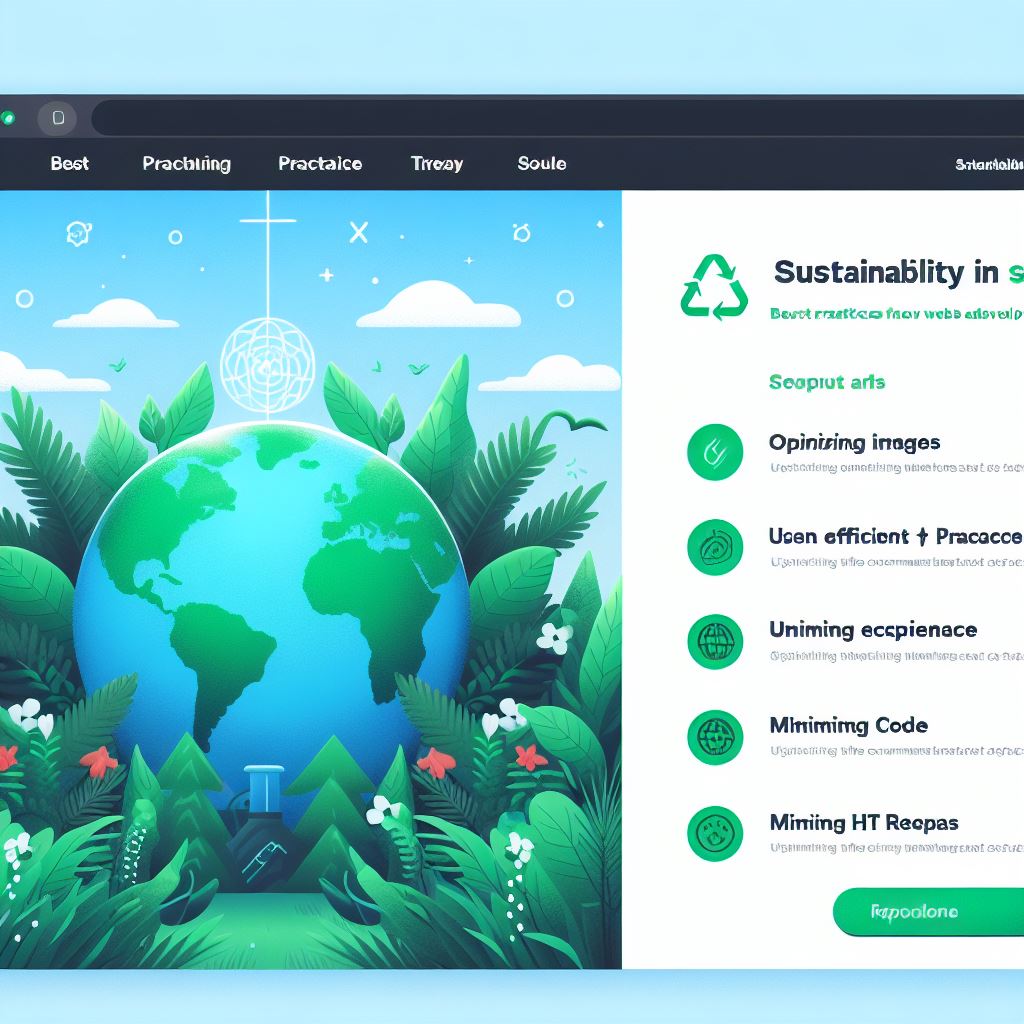Sustainable web development aims to create websites and online applications that operate with minimal environmental impact. By addressing the energy consumption of servers, data centers, and end-user devices, this approach contributes significantly to reducing the overall carbon footprint of the internet. Sustainable practices involve selecting eco-friendly web hosting, employing resource-efficient programming, and optimizing digital content to lessen redundancy and waste.
Strategies for Optimizing Energy Consumption
Optimizing the load on servers by balancing them effectively ensures that no single server is overwhelmed while others are underutilized. Techniques such as load balancing distribute traffic evenly across servers, which can significantly decrease the total energy demand. Embracing technologies like virtualization allows multiple virtual servers to run on a single physical server, maximizing utility while minimizing excess.
Choosing a web hosting provider that prioritizes sustainability is significant in reducing energy consumption. Green hosting providers use renewable energy sources, such as wind or solar power, to run their data centers. Many of these providers invest in energy-efficient hardware and participate in carbon offsetting programs, ensuring that their operations have a minimal environmental impact. By selecting a green web host, developers can ensure their websites are powered in an eco-friendly manner.
Employing energy-efficient coding practices involves writing clean, streamlined code that executes with minimal processing power. This includes optimizing algorithms for efficiency, removing unnecessary code, and minimizing the use of resource-intensive operations. Efficient use of caching reduces the need for repetitive data processing, further conserving energy.
Delivering web content efficiently is important in minimizing energy consumption. Techniques such as lazy loading, where content is loaded only when it’s needed, can drastically reduce the initial load on both servers and clients’ devices. Employing content delivery networks (CDNs) ensures that web content is served from locations closer to the end-user, decreasing load times and reducing the energy required for data transmission.
The principles of eco-friendly web design revolve around minimizing energy consumption across devices. This begins with optimizing website elements such as images, videos, and fonts to ensure they require less data and power to load. Responsive design enables websites to adjust seamlessly to various devices while conserving energy. Incorporating dark mode options and streamlined navigation reduces the amount of screen energy consumed during browsing, further cutting down the carbon footprint.

Technologies and platforms that prioritize sustainability, offer energy-efficient operations or are designed with optimization in mind are preferable choices for eco-friendly web development. Developers should conduct thorough research when selecting databases, content management systems, and development frameworks to ensure they align with sustainability goals.
Using tools that assess the energy efficiency and performance of web applications helps identify areas for improvement. Regularly monitoring load times, data transfer sizes, and server resource usage informs ongoing optimization efforts. Testing should include evaluating the website’s accessibility and performance across different devices and connections, ensuring an inclusive and energy-efficient user experience.
Regularly auditing and cleaning up databases remove redundant data, ensuring quicker access times and less strain on servers. Implementing efficient data retrieval methods, such as indexing, can significantly speed up queries, again reducing the energy footprint of web operations.
Optimizing web applications for energy-efficient user devices and advocating for responsible user practices can further reduce energy consumption. Designing websites that perform well on low-power devices ensures that battery-operated devices such as smartphones and tablets use less energy to access content. Encouraging users to adopt energy-saving measures, like reducing screen brightness or using energy-saving browsing modes, can also contribute to a lower overall energy footprint.
Promoting Eco-Friendly Practices in Web Development
Enhancing understanding of the environmental impacts of web development and the benefits of adopting eco-friendly practices is necessary. This can be achieved through a variety of channels, including hosting webinars, publishing research papers, creating blog posts, and offering workshops focused on sustainable web practices. These educational efforts should aim to reach stakeholders such as website owners, business leaders, and policy-makers, making the case for sustainability as a priority in digital endeavors.
Creating forums, online platforms, or interest groups where developers can share insights, tools, and success stories about sustainable web practices encourages a collective move towards greener solutions. Members can collaborate on open-source projects focused on sustainability, share eco-friendly coding techniques, and discuss the latest research on reducing digital carbon footprints. Community-driven initiatives often lead to innovation and can influence the widespread adoption of sustainable practices.
Advocacy for policies that support eco-friendly web development involves lobbying for regulations that encourage or require green practices in digital operations, such as incentives for using renewable energy in data centers and web hosting. Engaging with policymakers, participating in forums on digital sustainability, and collaborating with environmental organizations can amplify the call for policies that support a sustainable web ecosystem.
Agencies and developers that prioritize green solutions in their projects serve as examples to the industry, showcasing the feasibility and benefits of sustainable practices. Publicizing the success stories, metrics, and case studies of these projects can inspire others to follow suit, creating a ripple effect that fosters broader adoption of eco-friendly methods.
Through awareness campaigns and information dissemination, developers and organizations can educate users about the environmental impact of their digital activities and how choosing green web services can make a difference. As consumer preferences shift towards sustainability, businesses, and web developers will be more inclined to adopt eco-friendly practices in response to market demand.
From planning and design to development, testing, and deployment, sustainability can be integrated into every phase of web development. Employing lifecycle assessment techniques to evaluate the environmental impact throughout the development process can ensure that each stage contributes to the overall sustainability of the final product.
Embracing sustainability in web development is a necessary step towards reducing the environmental impact of our digital world. By optimizing energy consumption, minimizing carbon footprints, and promoting eco-friendly practices, web developers and organizations can lead the way in creating a greener, more sustainable internet for future generations